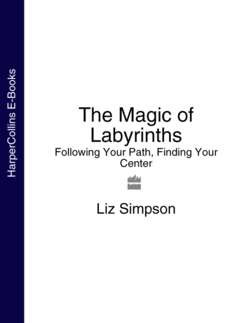Читать книгу The Magic of Labyrinths: Following Your Path, Finding Your Center - Liz Simpson - Страница 18
Contemporary Labyrinths
ОглавлениеAside from all the wonderful examples of labyrinths springing up around the world today – many of which we will read about in later chapters – this ancient symbol is proliferating on that most modern of tools – the Internet. If you are interested in the use of the labyrinth as a device in on-line and other interactive games, the World Wide Web will lead you, labyrinth-like, to the key resources.
One particularly inspiring use of the labyrinth on the computer is the on-line Lenten labyrinth. Professor Paula Lemmon teaches beginner’s Latin classes at the Southwestern Methodist University in Dallas, Texas. For the last two years (at the time of writing), her department has created an on-line Lenten labyrinth for which the students are charged with providing translations (from Latin into English) of various classical and religious texts. The 2001 project is totally interactive, with twelve candles pointing the way through this ancient devotional tool in order to illuminate the images and words contained within. Traditionally linked to the concept of pilgrimage by the Christian church (see here), the Lenten labyrinth allows the Web pilgrim to scroll through the Chartres design to read excerpts from medieval Latin texts (including Ovid’s Fasti), accompanied by images of the Holy Land that were created by the nineteenth-century painter, David Roberts in 1842. These images come from the archives of the University’s Bridwell Library, which holds a world-renowned collection of classical theological and other texts. This is the first time that images from David Roberts’ Holy Land folio have been digitally distributed, and presents a rare opportunity to see his work (see Resources).
